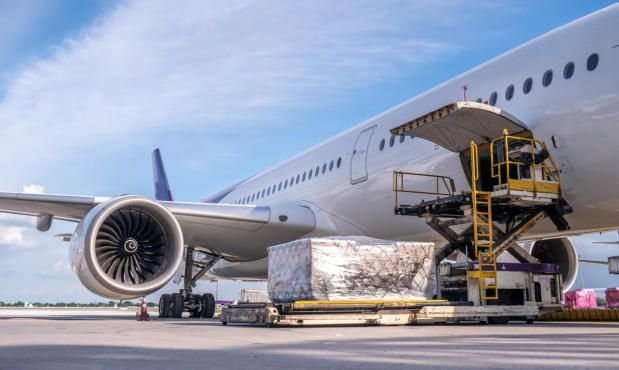Sky-High Shift: Rising Air Cargo Demand Reshapes Supply Chain Dynamics

One if by land, two if by sea — headaches, that is.
With the recent news that, after 22 years of partnership, UPS is replacing FedEx as the primary air cargo provider for the United States Postal Service (USPS), air transport is now top of mind for businesses dealing with supply chain snarls.
That’s because, with ongoing geopolitical tensions in the Red Sea disrupting the critical ocean trade corridor, and unexpected domestic hiccups like Baltimore’s Francis Scott Key Bridge collapse impacting U.S. trucking schedules, re-routing over land and sea is turning global trade voyages into a logistical nightmare of delay and uncertainty.
As a result, all eyes are on the skies for smooth shipments.
This, as the International Air Transport Association (IATA), a trade association of the world’s airlines, reported Monday (April 8) that this past February — the latest on record — was the third consecutive month of double-digit, year-on-year demand growth for the global air cargo market.
Total demand rose 11.9% while capacity increased 13.4%, per the IATA’s numbers — which also noted that Middle East-Europe trade was the world’s fastest-growing market in February, expanding 39.3%.
And observers believe the double-digit growth of the air cargo market is already reshaping the dynamics between shippers, carriers, freight forwarders and other commercial players within the global supply chain’s complex ecosystem.
Read more: Digital Platforms Look to Speed Logistics Sector Innovation
The Connective Tissue of the Global Supply Chain
Supply chains are the lifeblood of global commerce, but traditional supply chain models often remain reliant on manual processes and disjointed communication, leaving companies scrambling for alternative solutions when disruptions occur. After all, like most chains out there, supply chains can be brought down by their weakest link.
And as businesses navigate the dynamic and unpredictable realities global trade, the shift toward air cargo transport, allowing companies to bypass ground-based bottlenecks and maintain the flow of goods with minimal interruptions, represents a strategic pivot in supply chain management and resilience-building.
This trajectory is reshaping industry dynamics, prompting stakeholders to reassess their partnerships to capitalize on the opportunities presented — with shippers potentially using the macro backdrop as an occasion to negotiate shorter-term contracts that keep their options open, moving away from longer-term global air cargo contracts that lock them into a particular agreement.
“Not every buyer is going to pay all of their suppliers the same way … unlike traditional consumer payments, where there’s a standardized way in which consumers pay and merchants get paid — within the B2B arena, no two buyer-supplier profiles are the same,” Dean M. Leavitt, founder and CEO at Boost Payment Solutions, told PYMNTS.
And with strong demand for global air cargo also being pushed by Asian eCommerce platforms like Shein and Temu, that rely on air routes to ship their goods to foreign consumers, the ability of firms to meet their production schedules and manage inventory while controlling for costs is becoming critical.
Fortunately, we live in an increasingly interconnected and digitized world — the benefits of which are more and more helping firms adapt to the unpredictability inherent to global markets with predictive forecasting and real-time intelligence into far-flung operations.
See also: Supply Chain Chaos Threatens East Coast After Baltimore Bridge Collapse
Using Technology to Optimize End-to-End Supply Chain Processes
PYMNTS has for years been closely covering how ongoing digital transformations accelerated by cloud computing and data collection capabilities have helped businesses organize and disseminate information, spurring the growth of a new, hyper-modern and connected economy.
“Traditionally how you look at supply chains was that you needed to either have an adaptive supply chain and process, or you needed to be efficient. Now, it is basically that you need to be do both: You need to be optimized and efficient, and you need to be adaptable; and this applies across the value chain end-to-end,” Michael Falck, co-founder of RELEX Solutions, told PYMNTS.
“The last few years have emphasized the need to have good, adaptable IT solutions in order to cope with sudden changes in demand and identify bottlenecks in the whole supply chain while being able to react to those in a cost-efficient manner,” Falck added.
Digitally driven forecasting and optimization processes can help battle back against uncertainties, while allowing firms visibility into different opportunities.
“Digitizing supply chains provides a solution to the fragmentation of the freight market by unifying what is normally a disorganized process to be visible all in one place,” Fernando Correa, CEO and co-founder of international digital trade company Cargobot, told PYMNTS. “With a myriad of supply chain issues the freight industry continues to face, a smooth, standardized process for managing freight digitally is a clear solution.”

